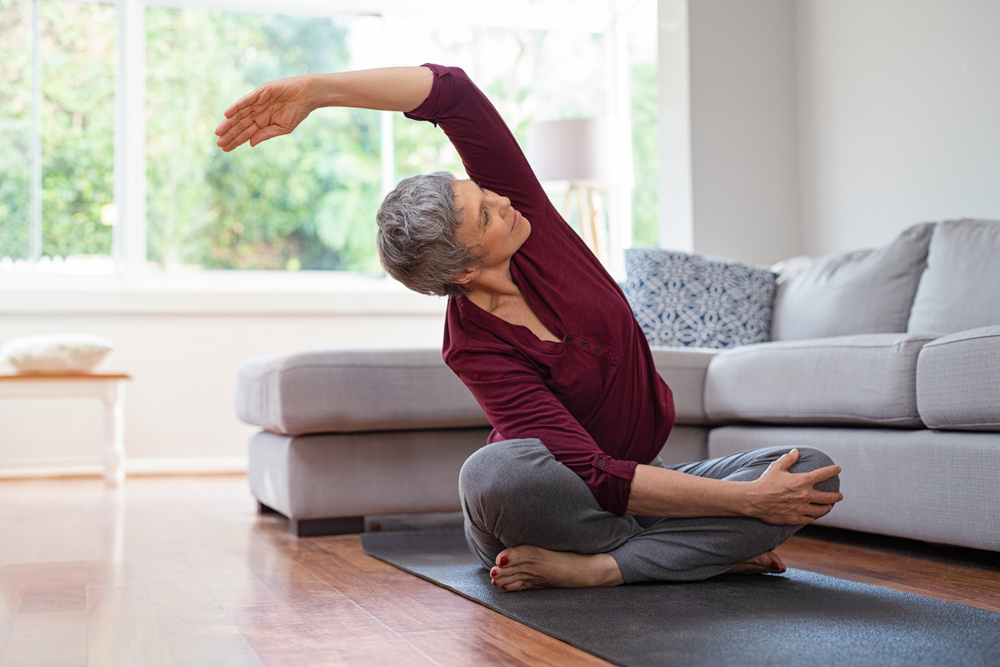
Falls are a serious concern for older adults, often leading to injuries, loss of independence, and reduced quality of life. However, you have the power to protect yourself from falls by implementing essential exercises and home modifications. By taking proactive steps to improve your strength, balance, and home safety, you can significantly reduce your risk of falling and maintain your independence for years to come.
Key Takeaways:
- Falls are a major threat to the health and well-being of older adults
- Regular exercise can improve strength, balance, and flexibility, reducing the risk of falls
- Simple home modifications can create a safer living environment and prevent accidents
- A combination of exercise and home modifications is the most effective approach to fall prevention
- Seeking guidance from professionals can help you develop a personalized fall prevention plan
Strengthening Exercises to Improve Balance and Stability
Engaging in regular strength training exercises is crucial for maintaining muscle mass, improving balance, and reducing the risk of falls. Focus on exercises that target your legs, hips, and core, such as squats, lunges, and leg raises. Resistance bands and light weights can add an extra challenge to your workouts. Aim for at least two strength training sessions per week, gradually increasing the intensity as your fitness improves.
Flexibility and Balance Training for Enhanced Coordination
Incorporating flexibility and balance exercises into your routine can help you maintain proper posture, improve coordination, and react quickly to prevent falls. Gentle stretching exercises, such as neck rolls, shoulder circles, and ankle rotations, can increase your range of motion and reduce stiffness. Balance training exercises, like single-leg stands, heel-to-toe walks, and tai chi, can enhance your stability and spatial awareness.
Home Modifications for a Safer Living Environment
Creating a safe living space is essential for reducing the risk of falls. Start by removing tripping hazards, such as loose rugs, clutter, and electrical cords. Install handrails and grab bars in strategic locations, particularly in the bathroom and along staircases. Ensure adequate lighting throughout your home, using night lights and motion-activated sensors to illuminate dark areas. Consider adding non-slip mats and treads to slippery surfaces, like bathrooms and stairways.
Assistive Devices and Adaptive Equipment for Added Support
Utilizing assistive devices and adaptive equipment can provide added support and stability as you navigate your daily activities. A sturdy cane or walker can help you maintain balance while walking, especially on uneven surfaces. Properly fitted footwear with non-slip soles can reduce the risk of slips and falls. In the bathroom, a raised toilet seat, shower chair, and handheld showerhead can make personal care tasks safer and more manageable.
Consulting with Professionals for Personalized Guidance
Seeking guidance from healthcare professionals and home safety experts can help you develop a comprehensive fall prevention plan tailored to your specific needs. Your doctor or physical therapist can assess your fall risk, recommend appropriate exercises, and provide guidance on managing medications that may affect balance. An occupational therapist or home safety specialist can evaluate your living space and suggest targeted modifications to enhance your safety and independence.
FAQs:
- Q: How often should I perform fall prevention exercises? A: Aim to engage in strength, flexibility, and balance exercises at least 2-3 times per week, or as recommended by your healthcare provider.
- Q: Can fall prevention exercises be done at home? A: Yes! Many fall prevention exercises can be performed safely at home, using minimal equipment and adapting to your available space.
- Q: What are some common home modifications to prevent falls? A: Common home modifications include removing tripping hazards, installing handrails and grab bars, improving lighting, and using non-slip mats and treads.
- Q: How can I determine if I’m at high risk for falls? A: Factors such as age, muscle weakness, balance issues, medication side effects, and a history of falls can increase your risk. Consult with your doctor for a fall risk assessment.
- Q: Are there professionals who can help me with fall prevention? A: Yes! Healthcare providers, physical therapists, occupational therapists, and home safety specialists can provide personalized guidance and support for fall prevention.
Conclusion:
Taking proactive steps to prevent falls is essential for maintaining your independence, health, and quality of life as you age. By incorporating targeted exercises and home modifications into your daily routine, you can significantly reduce your risk of falling and ensure a safer, more secure living environment. Remember, fall prevention is a continuous process that requires commitment and consistency. Start implementing these strategies today, and empower yourself to live life to the fullest, with confidence and peace of mind.







